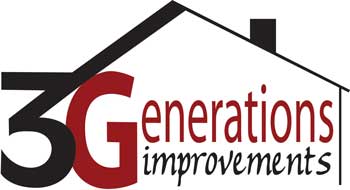Fiber cement siding and vinyl siding are two of the most prominent types of synthetic siding used today. There are advantages to each of them. Many people mistake fiber cement siding for vinyl siding because of common misconceptions about the two materials. Therefore, this article will focus on elucidating the key differences between these two resource categories.
Vinyl Siding vs. Fiber Cement Siding: Cost Comparison
Cladding homes with vinyl has become popular among homeowners looking to upgrade their properties. You won’t have any problem finding an excellent fit for your home’s decor because of the material’s ease of usage and many styles and colors. It is cheap and easy to install and requires nothing in the way of structural changes to your home. Even though vinyl siding is standard, there are other options; fiber cement siding is another choice you may want to explore if you prefer a different material.
Fiber cement siding may be a good option for individuals who desire something modern that can look nice when mixed with old structures. Conversely, fiber cement siding is textured and might resemble wood or stucco, depending on your chosen finish. Vinyl, on the other hand, is flawlessly smooth and shiny throughout. It’s more long-lasting than vinyl, which means it’s more resistant to water damage and has excellent resistance to mold growth. If you’re concerned about costs, know there are good arguments for why fiber cement may cost less than vinyl. Fiber cement is installed like vinyl (i.e., no structural alterations are necessary), making it an attractive option for cost-conscious people. It requires less maintenance over time than vinyl since it doesn’t need to be painted.
Vinyl Siding vs. Fiber Cement Siding: Installation Time and Difficulty Level
Fiber cement and vinyl siding are the most common options nowadays. Both are durable and low-maintenance, but their visual characteristics and other features set them apart, allowing you to utilize them in different situations. Fiber cement siding has no competition regarding the speed it may be installed. Vinyl siding installation often requires more physical effort than other siding options. This is because after it is unrolled, it must be fastened to the house using nails or screws, preferably both. Fiber cement is often offered as a single unit, making installation easier. Unlike vinyl siding, which requires many steps for installation, installing this material requires nailing or stapling it into place.
However, vinyl offers several advantages that make it worthwhile to think about utilizing it as an alternative approach to finishing your home renovation project. What’s the biggest perk? Fiber cement siding, even at its cheapest, is often more than twice as expensive as vinyl, so this is a significant saving. The cost of this siding is significantly reduced. Preparing your house for the new siding (which may include making repairs) will take some time at the project’s outset, no matter what material you pick.
Fiber cement siding is more cost-effective than vinyl siding since installing it costs around half as much. One disadvantage of fiber cement is that it requires more work and time from the homeowner regarding siding maintenance. Everyone can handle it, and it will be addressed after some time. These are both tasks that cannot be completed in a single day. If you’re on a tight budget yet want something that looks like wood, fiber cement might be the way to go because of its convincing wood-like appearance.

